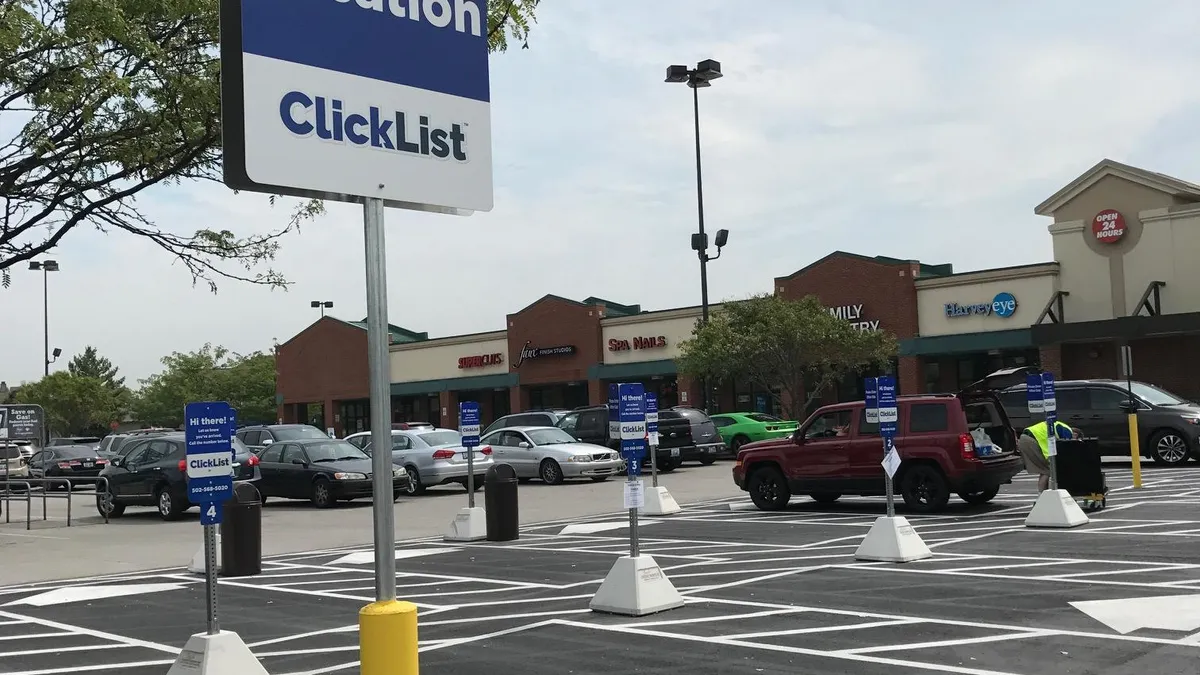Dive Brief:
- Kroger announced it has opened its 1,000th store featuring ClickList, the grocer's click-and-collect platform, according to a company release. The store, located in Milford, Ohio, opened three years after Kroger began piloting its ClickList concept.
- The grocer also introduced an updated online platform — a "seamless digital experience" — that offers faster and easier access to coupons, recipes, shopping lists and other features, according to the company.
- "Our customers tell us they want multiple ways to shop. We are committed to leveraging a combination of insights from 84.51˚, advanced technology and our digital platform to give our customers the ability to shop when and how they want to make their lives easier," Yael Cosset, Kroger's chief digital officer, said in the release.
Dive Insight:
With ClickList, Kroger has become one of the leading e-commerce providers in the grocery industry. While many of its competitors have scrambled to partner with third-party companies like Instacart and Shipt in recent months, Kroger has built a program from the ground up, and enjoys the benefits that come with that.
Like other e-commerce grocery operations, ClickList is inspiring shoppers to spend more. Matt Thompson, ClickList's vice president, recently told Reuters that the service's customers typically spent 40% to 60% more per order than average shoppers, mainly because they're buying large items like water jugs. And that comes on top of the $4.95 to $6.95 fee that shoppers pay per order.
Kroger enjoys additional benefits, though, that help explain the company's deep investment in the service. For one, Kroger controls the branding of ClickList. There's no marketing overlap with Instacart, and its online platform is distinct from competitors. Kroger also earns better margins, and fully controls the user experience, which can be crucial in gaining and retaining shoppers.
In its third-quarter earnings report, Kroger highlighted its 109% in digital sales driven by ClickList. As the company continues to expand the service — it's adding between 400 and 500 locations per year at this point — those increases should continue.
Kroger also stands to boost sales as it expands its new "seamless" digital offering to more markets. In addition to offering a faster, more intuitive online offering, the program seeks to integrate e-commerce with in-store shopping. For months, Kroger has worked on mobile programs that can help shoppers find products in aisles, offer personalized coupons while they’re shopping, and more.
In a conference call with analysts following its third quarter earnings release, CEO Rodney McMullen said tests show “households that engage in our seamless offerings, engaging digitally and with our physical stores spend more per week than households that do not.”
Research shows that customers prefer store pickup over home delivery right now. However, Kroger will have to battle Walmart for shoppers here. The mega retailer also offers click-and-collect service at 1,000 stores and plans to double that number by end of next year. Walmart just posted 2.7% same-store sales growth to go along with its strongest food sales in six years. This indicates the mega-retailer is gaining market share, which is worrying for Kroger since 80% of its stores sit within five miles of a Walmart, according to a report from Barclays. Although Walmart and Kroger have traditionally served different consumer demographics, both are seeking to broaden their reach through price investments, online shopping, store remodels and investments in fresh products.
Ultimately, grocery e-commerce won't be profitable for everyone. Experts believe it will pay off for the few that invest early, offer a compelling online platform and scale effectively. With its deep investments in scale and experience, Kroger's ClickList is positioned to become a profit center for a retailer that very much needs it.







